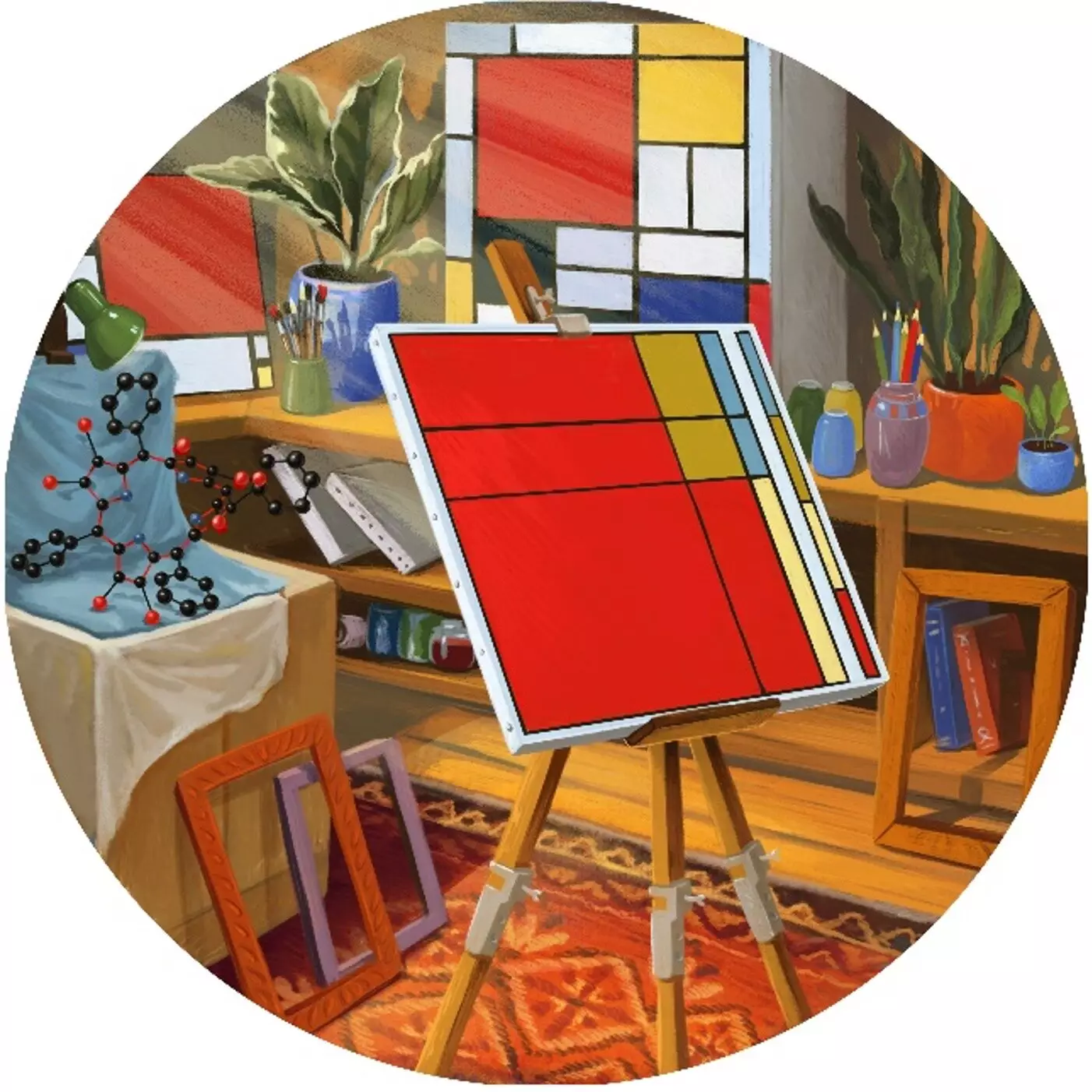In a groundbreaking endeavor, researchers at Trinity College Dublin have merged the worlds of chemistry and visual art through an innovative program that creates vivid representations of molecular structures inspired by the groundbreaking Dutch painter Piet Mondrian. Known for his avant-garde use of bold colors and geometric patterns, Mondrian’s influence has seeped into various fields, from design to music, making his artistic formulas a source of inspiration. On the scientific front, Mondrian’s concepts of symmetry and abstraction serve as useful tools in interpreting complex chemical phenomena, thus facilitating deeper conversations about molecular behaviors—a testament to the profound connections that can arise between seemingly disparate disciplines.
Reimagining Molecular Complexity
This ingenious program, which can be explored at http://www.sengegroup.eu/nsd, transforms intricate molecular structures into modernist art pieces reminiscent of Mondrian’s iconic style. By utilizing an artistic algorithm that converts 3D molecular data into a 2D visual format, the program reinterprets the chemical landscape of molecules into aesthetic boxes of primary colors and stark white backgrounds. This radical contrast not only offers an insightful glimpse into the architecture of molecules, but also poses intriguing questions about how we perceive chemical symmetry—a concept often lost in traditional molecular representations.
Professor Mathias O. Senge explains this synthesis as a playful yet serious exploration. While the initial concept was merely a creative exercise, it has evolved into a valiant effort to communicate complex scientific ideas through visual art. The method captures essential characteristics of molecular symmetry and shape, while simultaneously presenting them in a visually stimulating manner. This artistic lens effectively disrupts conventional methodologies, allowing scientists to view their work in a new light, thus enhancing their understanding and appreciation of molecular structures.
A Catalyst for Creativity and Intellectual Curiosity
Christopher Kingsbury, a postdoctoral researcher and the visionary behind the project, articulates that a universal visual language for displaying molecular structures holds immense significance for the chemistry community. By sculpting a “blueprint” of molecular behavior, scientists can predict how molecules will react and change in various environments. This approach mirrors the aesthetic simplifications employed by Mondrian, stripping away intricate details to reveal a compelling essence, thus elevating the understanding of complex scientific phenomena into the realm of artistry.
This interdisciplinary project challenges not just scientific thinking but also invites artists to see molecules as sources of inspiration. The integration of a scientific backdrop into artistic practice can stimulate a richer dialogue between disciplines, ultimately weaving a stronger fabric of understanding among sectors that often remain siloed from one another. By displaying scientific principles through visually captivating works, we may cultivate a newfound appreciation for both art and science, encouraging broader engagement from the public and fostering a deeper interest in the studies underpinning our physical world.
Porphyrins: A Case Study in Interdisciplinary Exploration
The advancements stemming from this project also relate closely to the research on porphyrins, known as the “colors of life,” due to their vital roles in biological processes and their vibrant hues. Professor Senge and his team’s innovative re-engineering of these pigments has resulted in the development of new biological sensors. Mimicking the intricacies of nature’s designs, these sensors act like microscopic Venus flytraps, capturing specific molecules, including environmental pollutants. The integration of artistic visualization creates an exciting narrative around porphyrins—opening pathways to not just comprehending their functions, but potentially exploring new applications in environmental science and biotechnology.
The interrelation between art’s visual language and scientific inquiry exemplifies how creativity can inform and enrich research endeavors. Professor Senge articulates a powerful sentiment: “Great art gives us a new perspective on the world.” The algorithmic “paintings” generated by the program could reveal previously unrecognized attributes of porphyrins, enhancing our appreciation of their properties while also inspiring new scientific inquiries grounded in artistic interpretation.
An Invitation to Envision the Future
As boundaries blur, the dialog between art and science grows ever more pertinent in today’s fast-paced world. Programs that harmonize complex scientific ideas with intuitive artistic expression represent not only a creative outlet but a transformative educational approach. The exploration of molecular symmetry through a Mondrian-inspired lens engenders curiosity that can motivate future scientists and artists to forge new paths in their respective fields. Such collaborations can illuminate the hidden beauty in complexity and reaffirm the value inherent in understanding our universe through multiple lenses. The future beckons with the promise that by seeing science through the prism of art, we might unravel deeper truths about the very fabric of existence.


Leave a Reply